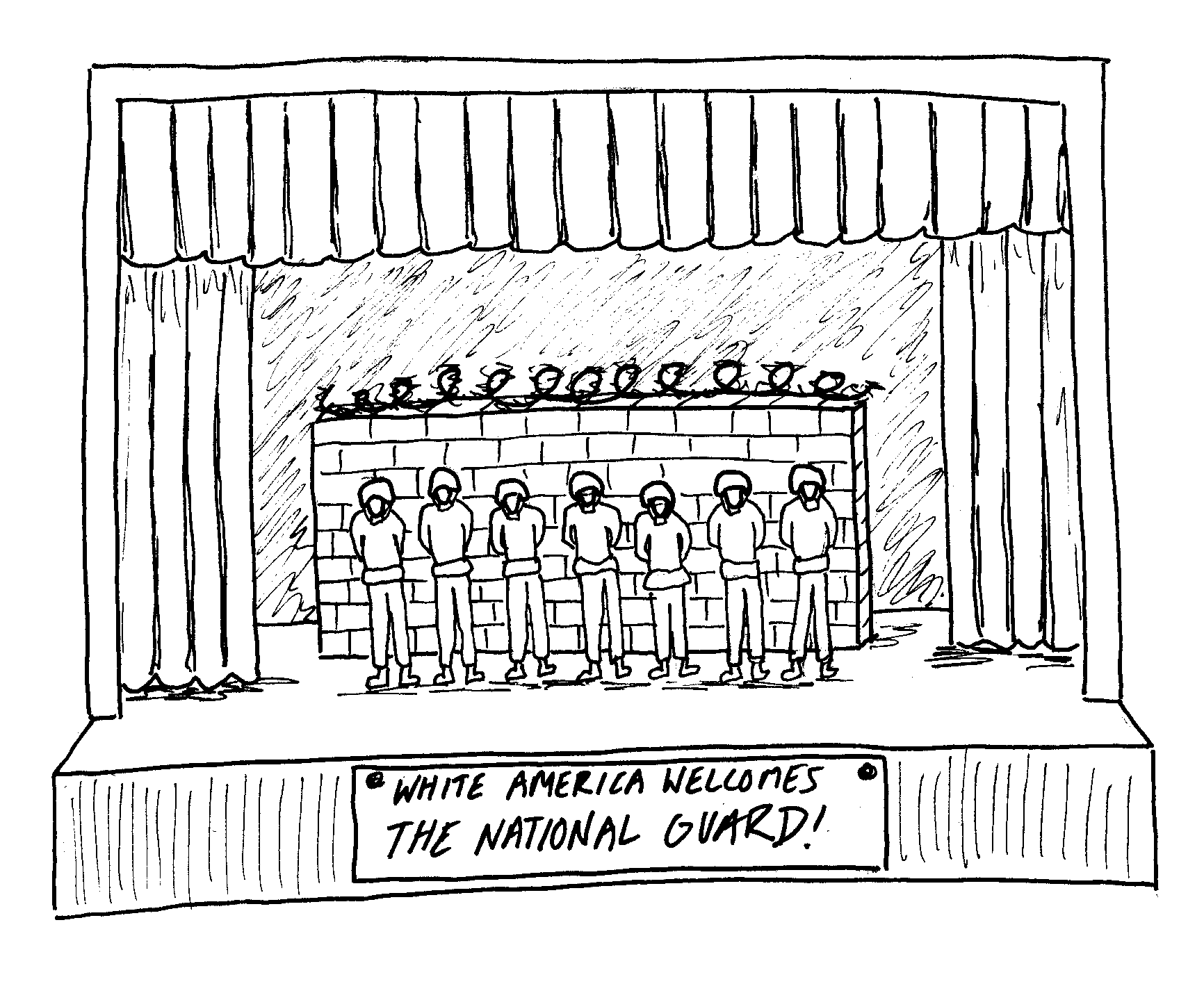Performative nationalism on the U.S.-Mexico border
April 13, 2018
 This
piece represents the opinion of the author
.
This
piece represents the opinion of the author
.
I wrote about the U.S.-Mexico border in this column a few weeks ago, discussing the potential environmental consequences of a border wall. In the time since my writing, the situation has developed. Santa Ana National Wildlife Refuge, the focus of my article, has been spared from construction due to immense public outcry and organizing from local activists. Of course, this is meager consolation—one protected refuge in a wildlife corridor still under assault is not enough to curb environmental ruin. Many parks and preserves, many of which I birded in this past January, are still at risk. However, knowing the community that rallied around Santa Ana, I have hope that more victories can be won as this local coalition of environmentalists, birders, lawmakers and community members fight back to save such incredibly unique places from destruction and quarantine. Furthermore, the fate of the wall itself is in limbo—the bureaucratic and legal obstacles to its construction may prove to be insurmountable in four years (fingers crossed).
Of course, there have been other, less encouraging developments in the borderlands. As I said in my earlier article, “the wall is just a physical manifestation of a conflict that has been ripping local communities apart for years,” and this past week we’ve seen that underlying conflict flare up in really distressing ways. The deployment of the National Guard to the border is by no means unprecedented—Obama and Bush oversaw similar operations (both of which deserve critique). Yet this movement is especially worrisome. The current rhetoric of the Republican Party, which has fired up dangerous anti-immigrant sentiment, is an especially toxic backdrop for border militarization. It’s aggressive and hyper-nationalist. Furthermore, many community leaders along the Rio Grande see the move as a ridiculous overreaction. This past week, The New York Times interviewed Texas State Representative Vicente Gonzalez, who represents one of the most populous border districts. “McAllen [Texas] is at a 32-year low in crime. We’re at a 46-year low in illegal entries. It’s the wildest thing in the world for us to hear that they want to bring National Guard troops to the border region,” he said, echoing a common local sentiment.
This “overreaction” is consistent with our current political landscape and is no coincidence. After all, you are more likely to be killed by an armed toddler than an undocumented migrant in the U.S., and undocumented persons are significantly less likely to commit crimes than naturalized citizens. Yet a quick glance at any conservative news-outlet today would give you the perception of a vastly different reality. For example, last week on Fox and Friends, Trump campaign advisor Katrina Pierson said that “most parents really don’t care about what the President tweets. People care when their children are shot and killed by illegal aliens.” Such an outrageous and hypocritical deflection is only one example of many in this administrations’ meticulous fear-mongering campaign against some of our country’s most vulnerable and exploited people. It’s not a rational campaign. It’s visceral and combative, an effort to rally the disenfranchised American working class against a common enemy—shifting anger away from where it should be—on the political and economic elites who pose the real threat. It’s a classic and viciously toxic political tactic. The “immigrants are taking our jobs” approach was clearly not enough, so now they’ve ratcheted it up to “immigrants are taking our lives.” This is indicative of the tactics’ more nefarious underbelly, an underbelly the Trump administration has flaunted with unusual brazenness. The resurgence of white nationalism across the West has not spared America—it is barely even veiled in this administration and in some of its supporters. In Europe, white nationalists lambaste African and Middle Eastern migrants for their violence and lawlessness and advocate for closed, militarized borders across Europe. In America, we’re doing exactly the same thing, with the fire and fury turned towards Latinx migrants and communities. This administration’s hardline stance on immigration is fueled by the same sentiments that have walled off Hungary and bolstered far-right extremists across Europe. They see the borderlands as an inherent danger to the soul of this country because they look like what they fear America might all look like one day, with a white minority and a rich culture not found on your typical main street.
Thus, this new militarization of the border is an especially aggressive maneuver—it’s a warning to non-white America, meant to intimidate and frighten. It’s performative. Let’s not paint it as anything else.


Comments
Before submitting a comment, please review our comment policy. Some key points from the policy: